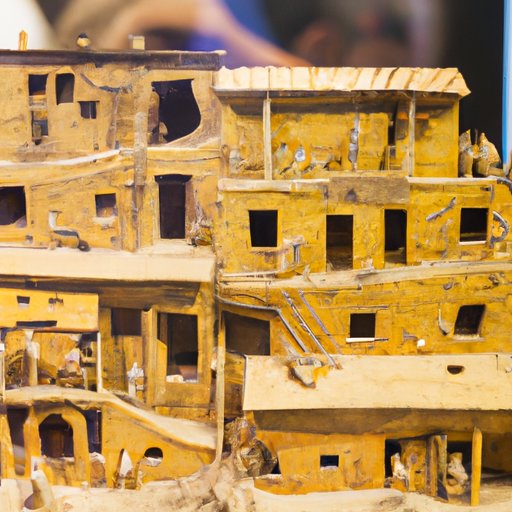Introduction
If you have never heard of a diorama, then you are in for a treat! A diorama is a three-dimensional model or scene representing a real-life situation, often with miniature figures. These models are used in several fields, including arts, science, education, and even cultural studies. In this article, we will explore the fascinating world of dioramas, from their history to how to create your own. Whether you are an enthusiast or a curious reader, this article has something for you.
Explaining the Concept of Diorama
The concept of diorama can be traced back to the early 19th century. According to the Oxford English Dictionary, “diorama” means a “scenic arrangement of lighting effects, viewed through a peephole or from the front of a stage.” Over the years, dioramas have evolved into more complex models, including mechanical components and lighting systems. Today, they are used in several areas, such as museums, art exhibitions, and even classrooms.
The History of Dioramas
The idea of creating miniature scenes or models is not new. The ancient Egyptians and Greeks used small-scale replicas of buildings and landscapes, while medieval craftsmen created small models of religious scenes. However, the modern diorama as we know it today originated in France in the early 1820s. Louis Daguerre, a French painter and inventor, created a diorama theater that projected images onto a translucent screen, creating a lifelike scene. Over the years, the diorama evolved and became more complex, with mechanical and electrical components added to create movement and sound.
Creating Your Own Diorama
Creating a diorama is a fun and engaging activity that can be enjoyed by people of all ages. Here’s how to do it:
- Choose a theme: Decide on the scene or story you want to create. It can be historical, fantasy, or anything that inspires you.
- Select Materials: Gather materials such as cardboard, foam, glue, and paint. You can use everyday objects like buttons or bottle caps for props.
- Design the Layout: Plan the layout of your diorama, and sketch out the scene on paper.
- Assemble the Model: Use the materials to create the models, figures and scenery according to your design.
- Add Details: Paint the models or scenery and add any final details like lighting.
- Show it Off: Display your diorama for others to enjoy and see your creation brought to life!
Dioramas in Science
Dioramas have been used in science education for decades. They provide an excellent way to illustrate complex scientific concepts in an accessible and engaging way. For example, dioramas are frequently used in biology and geology classes to teach students about animals or geological formations. They can also be used to show surgical procedures, the human anatomy or exhibit cells and tissues.
The Art of Dioramas
The art world has also embraced dioramas for many years. Some of the most famous art installations have incorporated dioramas, transforming the way visitors experience the exhibits. For example, the American artist James Turrell’s Ganzfeld works immerse visitors in an all-encompassing space through the use of color and light that creates a sense of floating. Japanese art has incorporated similar installations for centuries, characterized by their diorama-like installations called Edo Sceeneries. These awe-inspiring works are often made with natural materials, allowing visitors to fully immerse themselves in the beauty of the Japanese countryside or traditional festivals.
The Cultural Significance of Dioramas
Dioramas are used in different cultures to depict various religious events or cultural traditions. Japan has some of the most extensive and decorative use of dioramas, particularly in Shinto festivals, where the miniature models are placed on wooden platforms called mikoshi and carried through the streets. In India, various traditions use dioramas to represent scenes from the Hindu epic Ramayana or other cultural events that help preserve the community’s heritage and culture. In this way, dioramas can be a valuable means to pass on cultural traditions from one generation to the next.
Conclusion
The beauty of dioramas is that they can be used in multiple fields, including science, education, art, and cultural studies, and be enjoyed by anyone, regardless of age or skill level. The fascination with dioramas has only grown over the centuries and continues to capture people’s imaginations today. Whether you’re looking for a fun activity to do with the family or need to illustrate complex scientific concepts, dioramas are an excellent way to do it.
